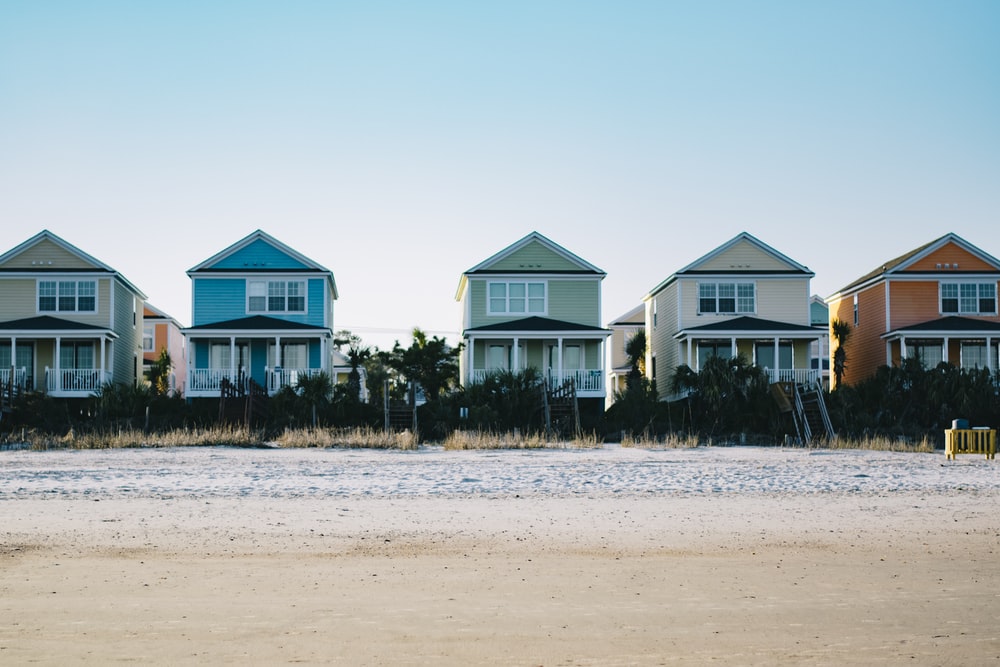Live by the Beach? These 7 Home Upgrades Prevent Environmental Damage

It’s wonderful to live by the beach, but the beach can take its toll on your property over time; salty sea spray, changing tides, and powerful storms can wear away and corrode your property. As a result, you’ll need to be extra vigilant when it comes to protecting your beach property from the elements.
Here are seven ways you can help your property stem the tide of time—and, of course, the tide itself!
Elevate the Building
While elevating your entire property might not be an easy task if it’s already built, it’s a great option for new properties—and, at times, a necessary option for existing ones. As water levels slowly rise around the world, many beachfront properties are at risk of being flooded by unusually high tides and storm surges.
In most cases, elevating a building requires elevating the base through strong piles, usually made from either steel or concrete. As most beachfront homes don’t have foundations, it’s usually possible to elevate an existing property.
Use Weatherproof Paints and Finishes
Weatherproof paints and finishes are among the most effective means of protecting your property from the ocean environment, particularly salty sea spray. Paints and finishes act as a sort of “barrier” between corrosive elements and your property’s structure, which can help significantly to prolong life.
However, waterproof paints and finishes need to be replaced regularly—the salty air and ocean water have to corrode something, after all! Be on the lookout for signs of worn finish or, if your property isn’t already painted or finished properly, be sure to apply the right finishes as soon as possible.
Put Covers on Your Furniture and Store Your Belongings
Your home isn’t the only thing that can be damaged by the ocean air: Your outdoor furniture and belongings can be too! Unfortunately, unlike your property, outdoor furniture usually doesn’t have the same corrosion-resistant finishes.
As a result, be sure to put covers over outdoor furniture and secure unused belongings in secure locations. Doing so will not only protect these things from corrosion but also help keep them secure and undamaged during major storms.
Use Corrosion-Resistant Hardware
When most people think of weatherproofing, they immediately think of larger surfaces such as siding and framing. While these components are crucial to your property’s structural stability, the hardware holding it all together—nails, screws, and so on—are easily ignored. Worst of all, it’s the hardware that keeps everything held together!
Be sure to select hardware that is weather- and corrosion-resistant, such as that made with galvanized metals. Unlike hardware in plain steel or iron, galvanized hardware won’t rust or corrode in the presence of salt or water.
Keep Up with Regular Maintenance
Even the strongest materials and finishes wear down over time, especially those used in beachfront homes. Nothing on your property is permanent; nearly everything will have to be replaced at one point. The key to keeping your property in top shape is to regularly maintain surface finishes and fittings and, perhaps most importantly, replace damaged areas as soon as possible.
Deck Waterproofing

Most beachfront homes have large decks, and for good reason—they’re usually the best place to enjoy the ocean view! Unfortunately, with their large, exposed surface areas, decks usually endure most of the damage from sea air, water, and storms.
One way to keep your deck in top shape is to invest in a waterproof deck coating. For more information on deck waterproofing solutions, call our deck treatment specialists at (888) 508-2966.
Leave a Comment
You must be logged in to post a comment.
RECENT POSTS
categories
- Uncategorized
- Waterproofing
- Stair Tread Replacement
- FAQ
- Balconies
- Precast Iron Stairs
- Outdoor Stairs
- Leisure Deck
- Deck Resurfacing
- Pool Decks
- Deck Maintenance
- Deck Staining
- Deck Materials
- Nonslip Deck Coatings
- Fiberglass Stairs
- Gardening
- Deck Repair
- Patio Waterpoofing
- Commercial waterproofing
- Concrete Waterproofing
